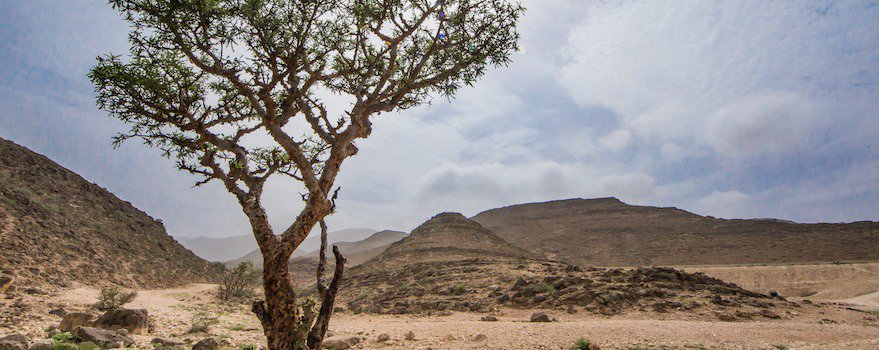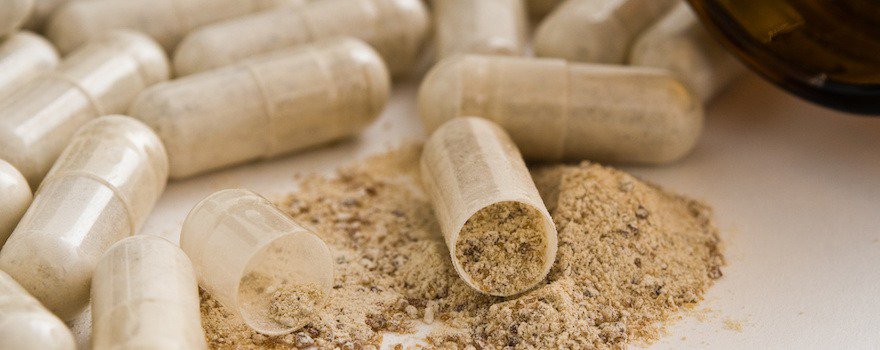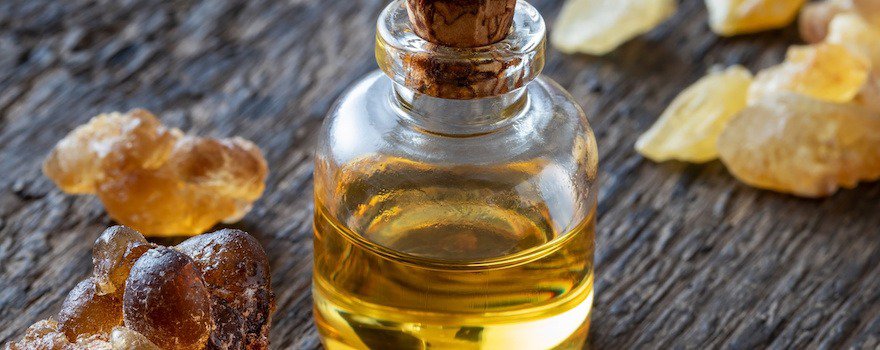BENEFITS OF BOSWELLIA
✓ Powerful anti-inflammatory
✓ Relieves pain
✓ Improves asthma symptoms
✓ Contributes to healthy intestinal function
✓ Strengthens the immune system
What is Boswellia?
In botany, the genus Boswellia includes around twenty species of trees. Among the best-known are Boswellia dalzielii, Boswellia sacra, and Boswellia serrata. Growing in Africa or Asia, these trees all have one thing in common: their aromatic resin is harvested to produce incense.
When we talk about boswellia in herbal medicine, we are referring more specifically to Boswellia serrata, native to India. While it is indeed an incense tree, it is also used for its medicinal properties because it is a powerful natural anti-inflammatory and pain reliever.

Boswellia is a gnarled tree that prefers the sandy, dry soils of desert regions. With great resilience, it fears neither drought nor heat. In its natural habitat, it can reach up to 8 m in height. From June to August, it produces yellowish-white flowers that later give way to small fruits.
But it is neither the leaves, nor the flowers, nor the fruits that contain the active principles of the tree. It is in the resin that the true treasure of boswellia is found. Extracted from the trunk, it is harvested in summer and autumn. In India, it is called “Salai guggul” when used alone, or “Olibanum indio” when combined with other Indian plants such as the turmeric, for example.
Scientific research has greatly contributed to the rise and popularity of boswellia. It is an outstanding anti-inflammatory, but also a powerful pain reliever thanks to its analgesic properties. It raises the threshold for pain tolerance.
Used in India for more than 4,000 years, boswellia and its consumption are gradually spreading in Europe. So much so that it is now considered one of the most powerful natural anti-inflammatories, alongside the turmeric, ginger or moringa. It is most often consumed as a dietary supplement (tablets, capsules, powder).
Nutritional composition
- Acides triterpéniques pentacycliques : acides boswelliques dont l’acide acétyle-11-kéto-béta-BA (AKBA)
- Acides triterpéniques tétracycliques
- Antioxydants
- Polysaccharides : arabinose, galactose, xylose
- Acétate d’incensol
- Huiles essentielles

The benefits of Boswellia
🌵 Powerful anti-inflammatory
If boswellia arouses such interest today, it is above all for its powerful anti-inflammatory action. In traditional Ayurvedic medicine, it is used to reduce inflammation linked to certain conditions: osteoarthritis, rheumatoid arthritis, Crohn’s disease, intestinal inflammation…
The boswellic acids are the active anti-inflammatory substances of the resin and more specifically the pentacyclic triterpenic acids. To reduce inflammation, these acids act in two steps.
First, they inhibit the formation of leukotrienes. These lipids are mediators of inflammation and also cause oxidative damage. Boswellic acids block the production of leukotrienes by acting on the enzyme 5-lipoxygenase (5-LOX).
Secondly, boswellic acids contribute to the proper functioning of blood vessels and improve blood circulation to tissues and joints. Thus, boswellia contributes to a faster resolution of inflammation.
This study, conducted by Italian researchers, was carried out on patients with psoriasis or erythematous eczema, inflammatory skin diseases. The resin extract of Boswellia serrata improved itching and erythema in 60 % of cases, thanks to the suppression of leukotriene formation via the 5-LOX enzyme.
This study, from the Indian Institute of Natural Resins and Gums, shows how much boswellia can be a promising anti-inflammatory agent for treating various inflammatory diseases.
💆♂️ Relieves pain
In addition to directly suppressing inflammation, boswellia relieves associated pain thanks to its analgesic effect. Again, it is the boswellic acids that allow such effectiveness.
In cases of arthritis, osteoarthritis or other inflammatory joint diseases, it relieves pain, reduces swelling, sensations of stiffness and heaviness. It also counteracts the loss of joint flexibility.
This study from the Nizam Institute of Medical Sciences in India, conducted on 12 patients, showed that boswellia has significantly increased the pain tolerance threshold compared to placebo.
🌬 Improves asthma symptoms
Because boswellia has anti-inflammatory properties, it has been researched for the treatment of asthma. Indeed, asthma is a respiratory disease caused by inflammation of the bronchi.
By inhibiting the production of leukotrienes, boswellic acids reduce bronchoconstriction — that is, the contraction of the bronchial muscles, leading to difficulty breathing. They also act on the NF-KB signaling pathway, which, when uncontrolled, can trigger asthma.
This study from Liaocheng People’s Hospital in China, conducted on mice, shows that boswellia extract attenuated airway inflammation and inhibited the release of Th2 cytokines, pro-inflammatory molecules involved in asthma.
♻️ Contributes to healthy intestinal function
Also thanks to its anti-inflammatory action, boswellia is of great interest for the entire gastrointestinal system. It notably combats chronic inflammatory bowel diseases (IBD) such as irritable bowel syndrome, ulcerative colitis (UC), or Crohn’s disease.
In this study from the University of Athens Medical School, conducted on 20 patients with ulcerative colitis, boswellia led to disease remission in 14 patients (compared with 4 patients in the group that received sulfasalazine, an intestinal anti-inflammatory).
🛡 Strengthens the immune system
Boswellia stimulates and protects the immune system. Boswellic acids act on the production of antibodies (immunoglobulin G) to fight various bacterial and viral infections. It also regulates the production of white blood cells (lymphocytes), thereby preventing the onset of autoimmune diseases.
This study from the University of Tuebingen in Germany explains how the extract of Boswellia serrata and boswellic acids can have beneficial effects on the immune system.

How to take boswellia?
Boswellia in tablet form
Boswellia resin extract is most often offered in tablet or capsule form. To fully experience its benefits, the concentration of boswellic acids must be sufficiently high (at least 70% boswellic acids).

Boswellia powder
You can also find boswellia resin ground into powder, to mix with water, fruit juice, or yogurt. Thanks to its essential oil content, it has a pleasant, if slightly bitter, taste. This form is often less concentrated in boswellic acids.
Boswellia essential oil
Boswellia essential oil should not be taken internally. It is used only for topical application, diluted in a vegetable oil, for its healing and regenerative properties.

Boswellia incense (for burning)
Boswellia incense can be diffused in the home to calm the mind, reduce stress, clear the airways, and purify the atmosphere.
Boswellia and turmeric
It pairs perfectly with turmeric, a plant with anti-inflammatory properties. They work synergistically to reduce inflammation and relieve pain, particularly in cases of arthritis. Boswellia and turmeric can therefore be taken together for better results. Our tree also pairs with horsetail, meadowsweet or devil’s claw.
Boswellia dosage
⚖️To relieve a temporary inflammation, it is recommended to consume between 600 and 900 mg of boswellia per day.
⚖️To treat an inflammatory condition (osteoarthritis, arthritis, intestinal inflammation…), the dose can go up to 1200 mg per day.
⏳Boswellia should be taken with meals, in 3 doses. Initial results generally appear after 2 to 4 weeks.
⏳It is possible to do 2- to 3-month courses to address inflammation more deeply. Be sure to space each course by a few days.
💊In tablet form : up to 3 per day for 400 mg tablets or capsules
🥄In powder : 1 level teaspoon per day
💧As an essential oil : for external use only. Apply to the skin after diluting in a vegetable oil.
Contraindications and side effects
Consumption of boswellia is contraindicated in the following people :
- Par mesure de précaution, les femmes enceintes ou qui allaitent ne doivent pas en consommer.
- On déconseille son utilisation chez les enfants de moins de 18 ans.
- Pour éviter les interactions entre les acides boswelliques et certains médicaments, les personnes sous traitement doivent demander l’avis de leur médecin.
Some side effects may occur after consuming boswellia but they are rare. The following adverse effects have been reported :
- Troubles gastro-intestinaux.
- Reflux acides.
- Nausées.
- Augmentation des urines.
- Réactions cutanées.
If symptoms persist, it is recommended to stop taking it and consult a doctor.
History, cultivation and market of boswellia
A revered resin

Burned during religious ceremonies, boswellia resin is a precious substance in Ayurvedic medicine. In Sanskrit, it is called “Gajabhakshya” in reference to the strength it gives to humans and animals that consume it.
In Ayurvedic medicine, boswellia is used alone or in combination with other Indian plants. It is also applied externally to treat skin problems.
But its use does not stop at the borders of India. Traces are also found on the Arabian Peninsula, in Ancient Egypt, and in ancient Greek and Roman times.
In Europe, it was at the end of the 20th century and thanks to the discovery of its active compounds that boswellia began to be consumed again. Boswellia from southern Oman is now highly prized.
Harvesting the resin
Each tree produces about 10 kg of resin per year. The harvest follows a specific protocol.
During the sap rise, in summer and autumn, the trunk or branches of Boswellia serrata are gently incised. A milky sap then flows out which, on contact with air, hardens into resin. The drops are collected and, once solidified, stored in baskets. The resin is either burned like incense, or used to produce dietary supplements (capsules, powder…) or essential oils.
On Omani markets, the whitest and purest pieces can fetch up to €60 per kg.
Report by Julia Perez and Charlotte Jean
Sources and scientific studies
Stefano Togni, Giada Maramaldi, Francesco Di Pierro, Massimo Biondi, 2014. A cosmeceutical formulation based on boswellic acids for the treatment of erythematous eczema and psoriasis.
M. Z. Siddiqui, 2011. Boswellia Serrata, A Potential Antiinflammatory Agent: An Overview.
K. Prabhavathi, U. Shobha Jagdish Chandra, Radhika Soanker, P. Usha Rani, 2014. A randomized, double blind, placebo controlled, cross over study to evaluate the analgesic activity of Boswellia serrata in healthy volunteers using mechanical pain model.
Zhimin Liu, Xiaoyun Liu, Lili Sang, Haifeng Liu, Qinghua Xu, Zhehui Liu, 2015. Boswellic acid attenuates asthma phenotypes by downregulation of GATA3 via pSTAT6 inhibition in a murine model of asthma.
Aikaterini Triantafyllidi, Theodoros Xanthos, Apostolos Papalois, John K. Triantafillidisc, 2015. Herbal and plant therapy in patients with inflammatory bowel disease.
Ammon HP, 2010. Modulation of the immune system by Boswellia serrata extracts and boswellic acids.



